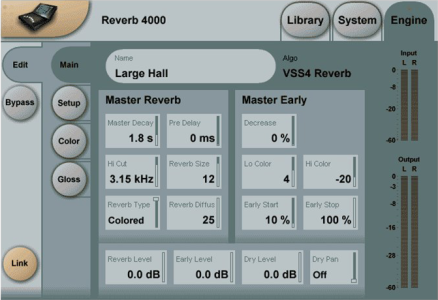I have a dry instrument with a convolution reverb as an insert to create early reflections. So the output of this track is combination of filtered/colored (for spatial position) direct sound and early reflections with 25 ms pre-delay, but no tail. Then, there's a send from this track to a tail reverb bus. The tail reverb has 0 ms pre-delay. Pretty standard setup, I think.
If we plot start time of each signal on a time axis, the dry signal starts at T0, ER at T25, but the tail starts at T0 for the dry signal and at T25 for ER. However, if the tail would be enabled directly on the insert reverb, the tail would start at T25+ for the direct signal and (I'm guessing) T50+ for ER (or is tail in this case calculated only from the direct signal?....I have no idea how is signal chain done inside the reverb plugin)
Is this correct? Is the difference audible to you?
Why is it OK to send a signal with direct sound and delayed ER to the tail reverb bus with 0 ms pre-delay? I'm guessing:
If we plot start time of each signal on a time axis, the dry signal starts at T0, ER at T25, but the tail starts at T0 for the dry signal and at T25 for ER. However, if the tail would be enabled directly on the insert reverb, the tail would start at T25+ for the direct signal and (I'm guessing) T50+ for ER (or is tail in this case calculated only from the direct signal?....I have no idea how is signal chain done inside the reverb plugin)
Is this correct? Is the difference audible to you?
Why is it OK to send a signal with direct sound and delayed ER to the tail reverb bus with 0 ms pre-delay? I'm guessing:
- It doesn't matter, as the direct sound to reverb tail signal ratio is so large it is barely/isn't audible.
- It doesn't matter, as it sound good, even if it's not physically correct.
- I'm doing it wrong. I should split direct signal and ER signal, and send direct signal delayed to the tail reverb.
- I'm completely wrong (please explain)
- Other (explain)




 You've got me to really rethink my current workflow. Those videos, in the link you posted, are terrific! Thanks again, you have been incredibly helpful!
You've got me to really rethink my current workflow. Those videos, in the link you posted, are terrific! Thanks again, you have been incredibly helpful!


